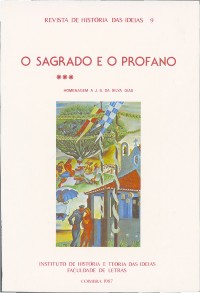Please use this identifier to cite or link to this item:
https://hdl.handle.net/10316.2/45332| Title: | O inventor P. Manuel António Gomes Himalaia: o cientista, o economista, o sacerdote | Other Titles: | The inventor Father Manuel Antonio Gomes Himalaia: the scientist, the economist, the priest | Authors: | Costa, P. Avelino de Jesus da | Issue Date: | 1987 | Publisher: | Imprensa da Universidade de Coimbra | Abstract: | Father Manuel Antonio Gomes Himalaia was born on 9th December 1868 in the village of Cendufe, belonging to the municipal jurisdiction of Arecs de Valdevez, in the district of Viana do Castelo, where he died on 21th December 1933. From 1883 to 1890 he studied theology in the diocesan seminary of Braga. His fellow students nicknamed him Himalaia because of his great height, and posterity has perpetuated the name. In the seminary he showed his passion for physics, chemistry and natural sciences, and he began to design his first inventions. In 1899 he went to Paris to complete his scientific and technical education. He frequented the Institute, the College of France, and the Observatory of physical astronomy of Meudon, meeting reknowned scientists. In September 1899 he applied to the French government for a patent for his Apparail pour l’obtention de hautes températures par les radiations solaires. He built four succesive devices of increasing perfection. He called the last one Pirelióforo and he exhibited it in the World Exposition of Saint Louis in Missouri (USA), where it was acclaimed as the greatest novelty. It was a devise of large dimensions: 13 metres at its highest and with a reflecting surface of 80 square metres, composed of 6.117 pure crystal mirrors fixed on a steel frame. On sunny days it managed to produce temperatures of 3.500 to 3.800° C., providing the most intense ray of light and heat ever obtained on earth up to that time. The invention was awarded the Grand Prix in the section of liberal arts. Himalaia invented explosives, which he called Himalaite and which were more powerful than those being used at the time and also less dangerous to handle. The American government asked him to reveal his secret and work for their navy, but he rejected the offer because he would have had to become a naturalized American citizen. He also invented other things and wrote several scientific and economic works. Father Himalaia was always a model priest and he declared that the final aim of his studies and scientific inventions was «the greater glory of God, man’s welfare, and the honour of my country, my family and the Church». He confirmed these high ideals in his will. | URI: | https://hdl.handle.net/10316.2/45332 | ISSN: | 0870-0958 2183-8925 (digital) |
DOI: | 10.14195/2183-8925_9-3_6 | Rights: | open access |
| Appears in Collections: | Revista de História das Ideias |
Files in This Item:
| File | Description | Size | Format | |
|---|---|---|---|---|
| o_inventor_p._manuel_antonio.pdf | 1.46 MB | Adobe PDF |  |
Items in DSpace are protected by copyright, with all rights reserved, unless otherwise indicated.
